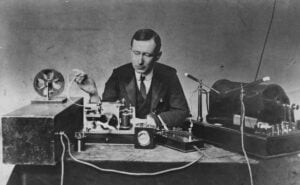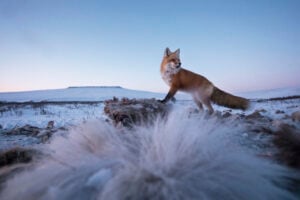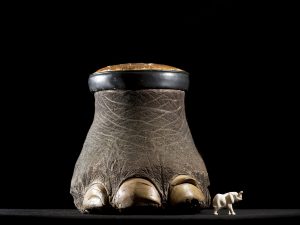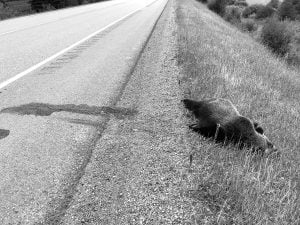
History
Ham radio and the world of amateur radio operators
A dive into the fascinating evolution of radio, starting from the first received message at Signal Hill, Newfoundland
- 2442 words
- 10 minutes
This article is over 5 years old and may contain outdated information.
Wildlife

Photographing wildlife is popular and perfectly legal. But using special radio receivers to track down animals that have been collared for science is wildlife harrassment, and new restrictions in three national parks have made it easier to charge perpetrators.
In Banff, Yoho and Kootenay National Parks, visitors are no longer allowed to possess telemetry receivers, which can track wildlife wearing VHF (very high frequency) transmitters. They’re not the type of thing an average park visitor would have kicking around.
“Prior to this restricted activity order, the only charge that was available to our enforcement officers would have been harassing wildlife, which is a very serious offence … but to do that, you’d have to prove the connection to the wildlife,” Bill Hunt, resource conservation manager for the Banff Field Unit, told CBC.
“With this restricted activity order in place, we’d only have to show that they had the telemetry device there for the purpose of pursuing wildlife.”
Hunt says there have been multiple instances where overzealous photographers have used scanners in their car to find wildlife, potentially interfering with and compromising the animal’s ability to hunt or find food. This is especially risky when it comes to wolves, bears and cougars.
“If those hunting sequences are interrupted by well-intentioned visitors, that can mean that animal goes without a meal for a day or many days or a week. It’s very difficult for them to get those opportunities,” Hunt said.
These days, large animal study subjects are more commonly equipped with GPS units, but there remain many still wearing the older VHF collars. Under the National Parks Act, the maximum penalty for wildlife harrassment is $25,000.
Are you passionate about Canadian geography?
You can support Canadian Geographic in 3 ways:

History
A dive into the fascinating evolution of radio, starting from the first received message at Signal Hill, Newfoundland

Wildlife
Wildlife photographers on the thrill of the chase — and the importance of setting ethical guidelines

Wildlife
An estimated annual $175-billion business, the illegal trade in wildlife is the world’s fourth-largest criminal enterprise. It stands to radically alter the animal kingdom.

Wildlife
This past summer an ambitious wildlife under/overpass system broke ground in B.C. on a deadly stretch of highway just west of the Alberta border. Here’s how it happened.